Overclocking
The limits of this card are far higher than those of the competitors with similar Power Target, which is of course also due to the already mentioned good GPU quality. however, this alone is of little use if the power supply is not good. From this point of view, with the combination of both, coupled with a fat cooler, we finally have a nice ideal case of maximum feasibility when all circumstances meet appropriately.

With an adjustable Power Target of 138%, the card approved a good 190 watts and was only slowed down by the voltage in the end. We were able to increase the GPU clock clock to a stable 2152 MHz and the memory clock by 200 MHz at maximum fan speed, which is certainly an absolute exception in terms of the GPU. At 100% fan speeds, the temperature of the GPU remained at approx. 53°C also low enough to keep the boost steps permanent even with Witcher 3 in Ultra HD.
Temperatures and clock rates
First, we compare the achieved start and end values for temperatures and GPU clock (boost) in tabular form:
| Initial |
Final value |
|
|---|---|---|
| Open Benchtable | ||
| GPU Temperatures |
27 °C | 61 °C |
| GPU clock | 1911 MHz | 1860 MHz |
| Ambient temperature | 22 °C | 22 °C |
| Closed Case | ||
| GPU Temperatures |
28 °C | 65 °C |
| GPU clock | 1911 MHz | 1860 MHz |
| Air temperature in the housing | 22°C | 39°C |
| OC (Open Benchtable) | ||
| GPU temperatures (approx. 2800 rpm) | 25 °C | 52-53 °C |
| GPU clock (after 30 minutes) | 2165 MHz | 2152 MHz |
| Ambient temperature | 22°C | 22°C |
Overview Graphs: Temperatures vs. Clock
For better illustrations now again the respective courses considering our timeline of a total of 15 minutes each for the warm-up time.
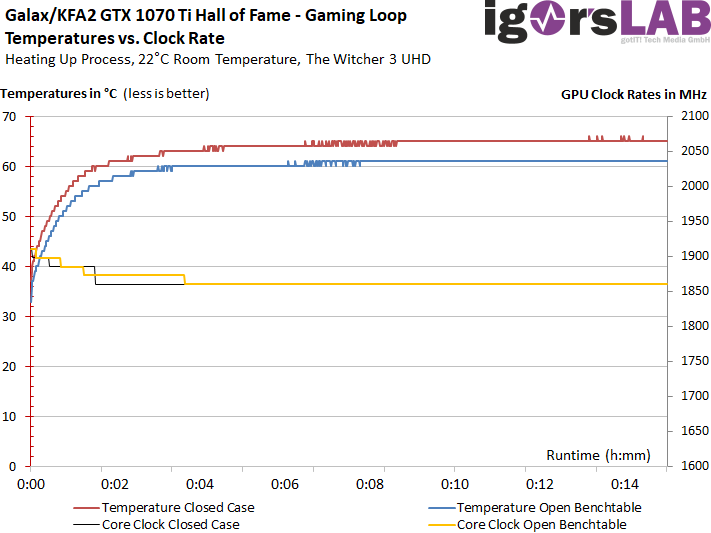
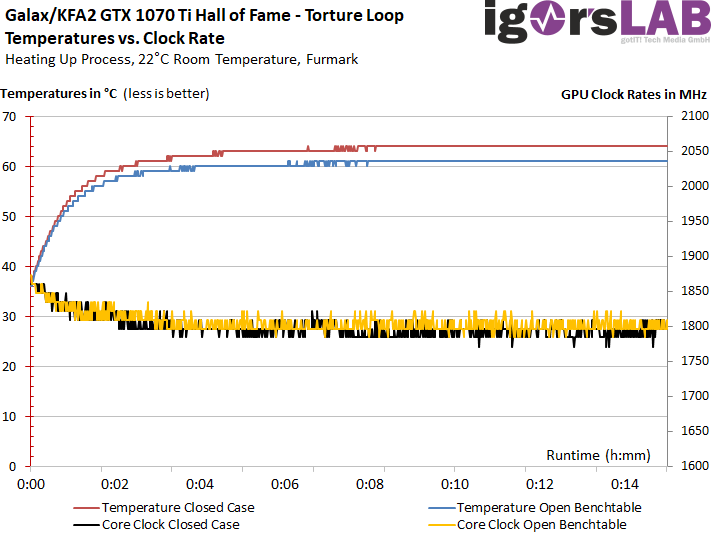
Thermal analysis of the back of the board
Finally, we consider the thermal analysis of the respective load states.
Gaming and overclocking
We see that pretty much all areas stay cool with the gaming loop, because the airflow is sufficiently dimensioned. However, try to stay at 65°C (or below) with the GPU so as not to lose too many boost steps.
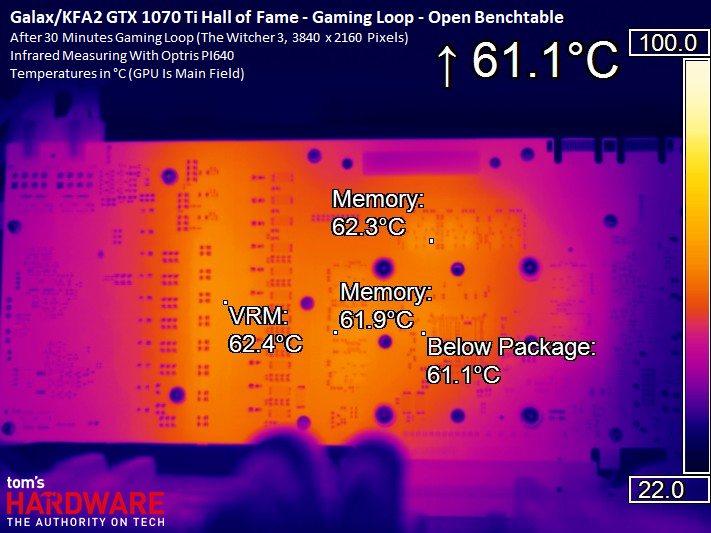
This also applies to the use in a closed housing, where we average on the board only by approx. Measure 3-5 degrees higher temperatures, with the area below the package getting a tick warmer than the GPU as such. Nevertheless, all temperatures in the deep green area and with well below 70°C at the warmest point are downright Siberian.
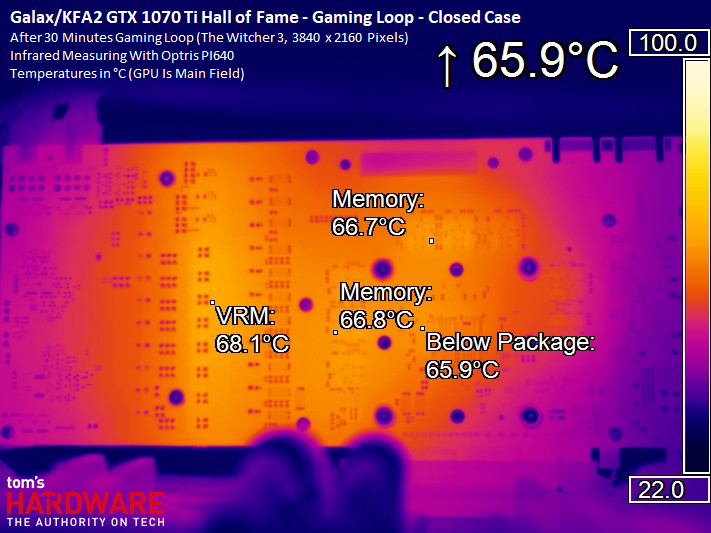
Stress
The stress test also shifts the temperature load slightly towards memory and memory VRM, but everything stays almost as cool as the gaming loop.
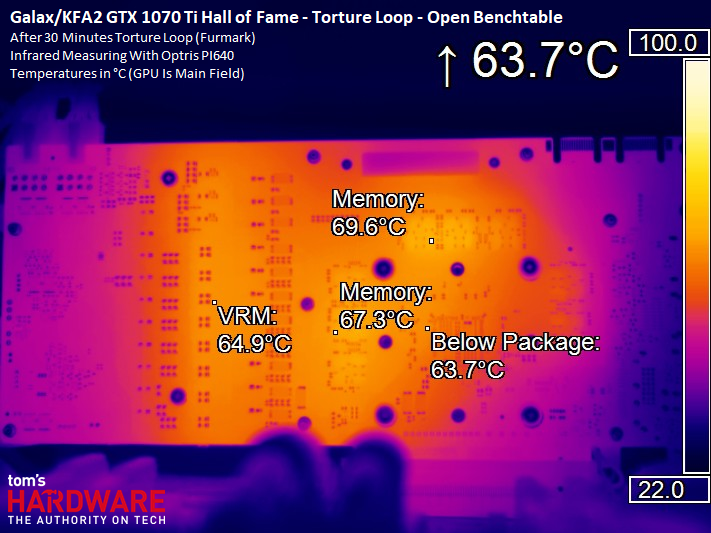
Even in the closed housing, this time it is only a few degrees more at the neuralgic points, nothing more. You can still live comfortably with this, too, because the 70's mark is only partially slightly surpassed. This is really good and leaves a lot of reserves open.
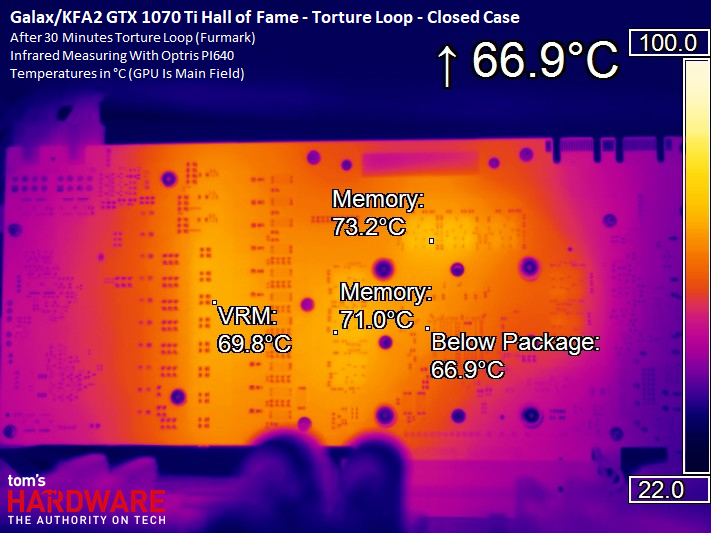


























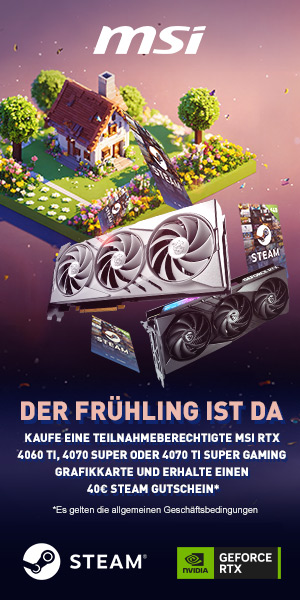





Kommentieren